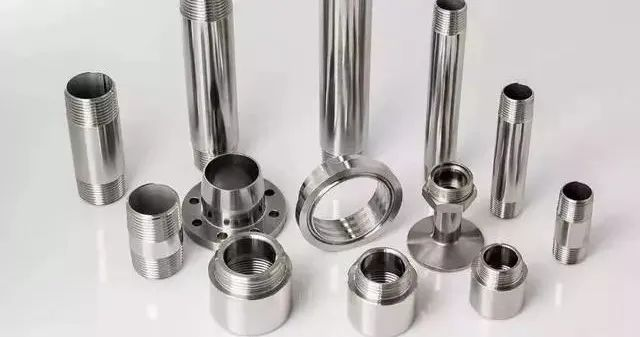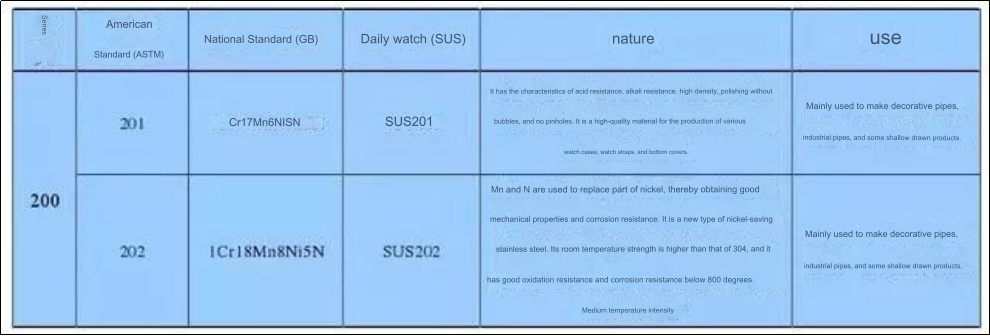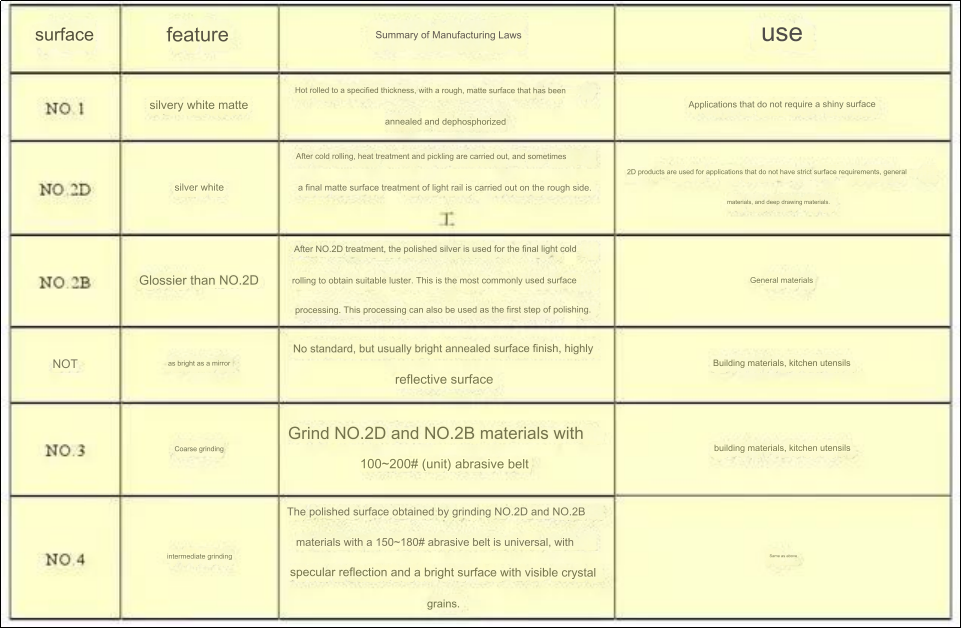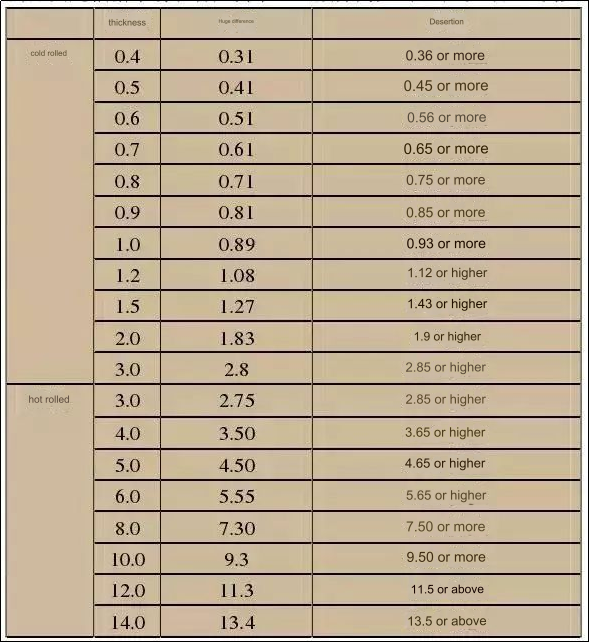Stainless steel is a popular choice for making instruments. Learning about stainless steel can help instrument users become more adept at selecting and using instruments effectively.
Stainless steel, often abbreviated as SS, is able to withstand exposure to air, steam, water, and other mild corrosive substances. Meanwhile, steel that is able to resist the effects of chemical corrosion from substances like acid, alkali, salt, and other chemical etchants, is known as acid-resistant steel.
Stainless steel, also known as stainless acid-resistant steel, can withstand air, steam, water, and mild corrosive substances. However, it’s important to note that not all stainless steel is resistant to chemical corrosion. On the other hand, acid-resistant steel is designed to resist the effects of chemical media such as acid, alkali, and salt. The corrosion resistance of stainless steel is determined by the alloying elements within the steel.
Common classification
Usually divided by metallographic organization:
In the realm of metallographic organization, regular stainless steel is commonly categorized into three groups: Austenitic stainless steel, ferritic stainless steel, and martensitic stainless steel. These groupings form the basis, and from there, biphase steel, precipitation-hardened stainless steel, and high alloy steel containing less than 50% iron have been developed to meet specific needs and serve particular purposes.
1, Non-Magnetic Stainless Steel
This type of stainless steel has a crystal structure known as austenitic, which is mainly strengthened through cold working. It’s not magnetic, but the 200 and 300 series numbers, like 304, are commonly used by the American Iron and Steel Institute to identify this steel.
2, Stainless Steel Made Mostly of Iron
This type of stainless steel mainly consists of a crystal structure dominated by ferrite (phase A), which is magnetic. It typically can’t be hardened through heating, but undergoing cold working can result in a slight increase in strength. The American Iron and Steel Institute specifies 430 and 446 as examples.
3, Tough Stainless Steel
This type of stainless steel has a crystal structure called martensitic that is magnetic. Its mechanical properties can be changed through heat treatment. The American Iron and Steel Institute refers to it as 410, 420, and 440. Martensite starts off with an austenitic structure at high temperatures and can change to martensite (i.e., gets harder) when it cools at the right speed to room temperature.
4, Duplex Stainless Steel
This type of stainless steel has a mixture of austenitic and ferritic structures. The proportion of the lesser phase in the structure is usually greater than 15%, making it magnetic and capable of being strengthened through cold working. 329 is a well-known example of this type of stainless steel. When compared to austenitic stainless steel, duplex steel exhibits greater strength and a notable increase in resistance to intergranular corrosion, chloride stress corrosion, and point corrosion.
5, Stainless Steel with Precipitation Hardening Capability
This type of stainless steel has a matrix that is either austenitic or martensitic and can be hardened through precipitation hardening. The American Iron
andSteel Institute assigns 600 series numbers to these steels, such as 630, which is also known as 17-4PH.
In general, aside from alloys, austenitic stainless steel offers exceptional corrosion resistance. For less corrosive environments, ferritic stainless steel can be used, while in mildly corrosive environments where high strength or hardness is needed, martensitic stainless steel and precipitation hardened stainless steel are suitable options.
Features and application areas
Surface technology
Thickness differentiation
1, because the steel mill machinery in the rolling process, the roll heat appears slight deformation, resulting in the thickness of the rolled out board deviation, generally thick on both sides of the thin. When measuring the thickness of the board, the state stipulates that the middle part of the board head should be measured.
2, the reason for the tolerance is according to the market and customer demand, generally divided into large tolerances and small tolerances: for example,
What kind of stainless steel is not easy to rust?
There are three main factors affecting stainless steel corrosion:
1, the content of alloying elements.
Impact of Alloying Elements In general, steel containing at least 10.5% chromium demonstrates resistance to rust. Furthermore, stainless steel with higher levels of chromium and nickel, as found in 304 steel with 8-10% nickel and 18-20% chromium, displays enhanced corrosion resistance and is generally resistant to rust in typical conditions.
2. Influence of Smelting Process on Corrosion Resistance
The corrosion resistance of stainless steel can also be impacted by the smelting process in production facilities. Large-scale stainless steel plants equipped with advanced technology and modern equipment can ensure stable and reliable product quality through precise control of alloying elements, effective impurity removal, and precise management of billet cooling temperatures. This results in superior internal quality and reduced susceptibility to rust. Conversely, smaller steel mills with outdated equipment and technology may struggle to remove impurities during smelting, leading to the inevitable rusting of their products.
3. the external environment, the climate is dry and ventilated environment is not easy to rust.
The condition of the external environment, particularly a dry and well-ventilated climate, does not promote rust formation. Conversely, high levels of air humidity, prolonged rainy weather, or environments with elevated pH levels can lead to rust formation. Even 304 stainless steel will rust if subjected to adverse environmental conditions.
Stainless steel appears rust spot how to deal with?
1. Chemical methods
Use chemical methods such as pickling paste or spray to facilitate the re-passivation of rusted areas, forming a chromium oxide film that reinstates corrosion resistance. Following pickling, thorough rinsing with water is essential to remove all contaminants and acid residues. Complete the treatment process by repolishing with appropriate equipment and sealing with wax. For minor localized rust spots, a 1:1 mixture of gasoline and oil can be applied with a clean cloth to remove the rust.
2. Mechanical method
The use of sand blasting, glass or ceramic particle shot blasting, abrading, brushing, and polishing constitutes physical methods for removing contamination left by prior polishing or abrading activities. Any form of contamination, particularly foreign iron particles, can lead to corrosion, particularly in damp settings. Thus, it is advisable to carry out the physical cleaning of surfaces under dry conditions. It is important to note that the application of physical methods can solely remove surface impurities and does not alter the inherent corrosion resistance of the material. Consequently, it is advisable to finish the process by repolishing with appropriate equipment and sealing with polishing wax.
Instrument commonly used stainless steel grade and performance
1, 304 stainless steel is a highly utilized austenitic stainless steel, ideal for producing deep-drawn cnc machined components, acid pipelines, containers, structural parts, and various instrument bodies. Additionally, it is capable of manufacturing non-magnetic and low-temperature equipment and components.
2, 304L stainless steel is utilized to address the intergranular corrosion susceptibility of 304 stainless steel due to Cr23C6 precipitation under specific conditions. The sensitized state of this ultra-low carbon austenitic stainless steel offers markedly improved intergranular corrosion resistance compared to 304 stainless steel. Additionally, while it exhibits slightly lower strength, it shares similar properties with 321 stainless steel and is primarily employed for welding. It is well-suited for the manufacturing of various instrument bodies and corrosion-resistant equipment and components that cannot undergo solid solution treatment.
3, 304H stainless steel. The internal branch of 304 stainless steel, carbon mass fraction of 0.04%-0.10%, high temperature performance is better than 304 stainless steel.
4, 316 stainless steel. The addition of molybdenum on the basis of 10Cr18Ni12 steel makes the steel have good resistance to reducing media and point corrosion. In seawater and other media, corrosion resistance is better than 304 stainless steel, mainly used for pitting resistance materials.
5, 316L stainless steel. Ultra-low carbon steel, with good resistance to sensitized intergranular corrosion, suitable for the manufacture of welded parts and equipment with thick cross-section sizes, such as corrosion resistant materials in petrochemical equipment.
6, 316H stainless steel. 316 stainless steel internal branch, carbon mass fraction of 0.04%-0.10%, high temperature performance is better than 316 stainless steel.
7, 317 stainless steel. Pitting and creep resistance is better than 316L stainless steel, used in the manufacture of petrochemical and organic acid corrosion resistant equipment.
8, 321 stainless steel is an austenitic stainless steel with titanium stabilization. The addition of titanium is aimed at enhancing the resistance to intergranular corrosion, and it also exhibits favorable mechanical properties at high temperatures. Under most circumstances, it is not suggested for use, except for specific scenarios like encountering high temperatures or hydrogen-induced corrosion.
9, 347 stainless steel is an austenitic stainless steel alloy that is stabilized with niobium. The addition of niobium serves to enhance its resistance to intergranular corrosion and its ability to withstand corrosion in acidic, alkaline, salty, and other harsh chemical environments. It also exhibits excellent welding characteristics, making it suitable for use as a corrosion-resistant material and as heat-resistant steel. This steel alloy is predominantly utilized in thermal power and petrochemical industries for various applications such as manufacturing containers, pipes, heat exchangers, shafts, and furnace tubes in industrial furnaces, as well as for furnace tube thermometers.
10, 904L stainless steel is a highly advanced austenitic stainless steel developed by OUTOKUMPU (Finland) with a nickel content ranging from 24% to 26% and a carbon content of less than 0.02%. It boasts exceptional corrosion resistance and performs well in non-oxidizing acids such as sulfuric acid, acetic acid, formic acid, and phosphoric acid. Additionally, it demonstrates robust resistance to crevice corrosion and stress corrosion. It is well-suited for use with sulfuric acid at various concentrations below 70℃ and offers superior corrosion resistance in acetic acid and mixed acids of formic acid and acetic acid at any concentration and temperature under normal pressure. Originally classified as a nickel-based alloy under the ASMESB-625 standard, it has now been reclassified as stainless steel. While China’s 015Cr19Ni26Mo5Cu2 steel shares similarities with 904L, several European instrument manufacturers use 904L stainless steel as the primary material for their cnc parts, such as the E+ H mass flow meter measurement tube and the Rolex watch case.
11, 440C stainless steel. Martensitic stainless steel, the highest hardness in the hardenable stainless steel, stainless steel, hardness is HRC57. Mainly used to make nozzles, bearings, valve spool, seat, sleeve, stem and so on.
12, 17-4PH stainless steel is classified as a martensitic precipitation-hardened stainless steel with a Rockwell hardness of 44. It offers exceptional strength, hardness, and corrosion resistance, although it is not suitable for use at temperatures exceeding 300°C. This steel exhibits good resistance to atmospheric conditions, as well as diluted acids or salt. Its corrosion resistance is comparable to that of 304 stainless steel and 430 stainless steel. Applications for this steel include its use in the production of offshore platforms, turbine blades, valve spools, seats, sleeves, valve stems, and more.
In the field of professional instrumentation, the selection of conventional austenitic stainless steel is determined by factors such as versatility and cost. The commonly recommended sequence for stainless steel selection is 304-304L-316-316L-317-321-347-904L. Notably, 317 is less commonly used, 321 is not favored, 347 is preferred for high temperature corrosion resistance, and 904L is the default material for specific components manufactured by certain companies. The 904L stainless steel is typically not the typical choice in design applications.
In the instrument design and selection, often encounter a variety of different systems, series, grades of stainless steel, selection should be based on the specific process media, temperature, pressure, stress parts, corrosion, cost and other aspects of consideration.
Anebon pursuit and enterprise goal is to “Always satisfy our customer requirements”. Anebon keep on to establish and style and design outstanding top quality goods for both our outdated and new prospects and realize a win-win prospect for our clientele just like we customize high-precision extrusion profiles, cnc turning aluminum parts and aluminum milling parts for customers. Anebon with open arms, invited all interested buyers to visit our website or contact us directly for further information.
Factory Customized China CNC Machine and CNC Engraving Machine, Anebon’s product are widely recognized and trusted by users and can meet continuously developing economic and social needs. Anebon welcome new and old customers from all walks of life to contact us for future business relationships and achieving mutual success!
Post time: Jan-23-2024








